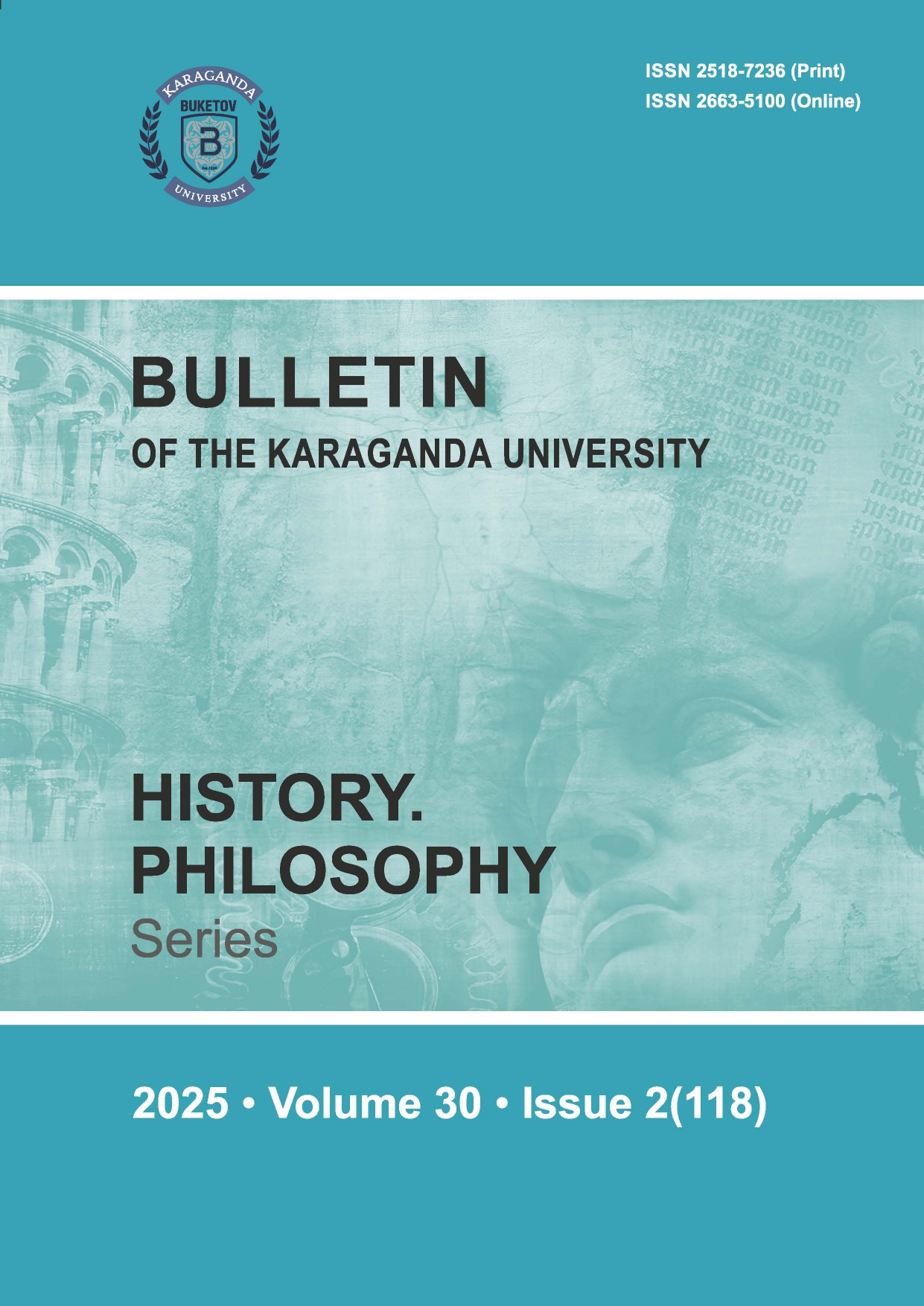Embodied Aesthetics and Philosophy in the Traditions of Sal-seri, Stilt Walkers, and Tricksters in Kazakh Steppe Performance
DOI:
https://doi.org/10.31489/2025hph2/213-221Keywords:
Kazakh philosophy of art, sal-seri, cultural memory, tricksters, nomadic ethics, agashayakAbstract
This article explores the philosophical dimensions of Kazakh performative traditions, focusing on the aesthet-ic, spiritual, and social significance of sal-seri culture, stilt walkers (agashayak), and tricksters within the no-madic heritage of the Kazakh Steppe. Drawing from historical, ethnographic, and folkloric sources, the paperargues that these artistic forms are not mere entertainments but constitute complex embodied philosophies ofbeing, resistance, and communal memory. Through the lens of cultural aesthetics and performative identity,we examine how sal-seri figures — poet-singers, warriors, craftsmen, and spiritual intermediaries — acted asagents of ethical critique, poetic expression, and social cohesion. The syncretic blend of music, humor, ritual,and physical virtuosity embedded in these practices offers insight into an indigenous Kazakh philosophy ofart rooted in mobility, improvisation, and ecological attunement. These traditions also prefigure contemporarynotions of performativity, particularly in their fusion of artistic, ethical, and existential domains.




